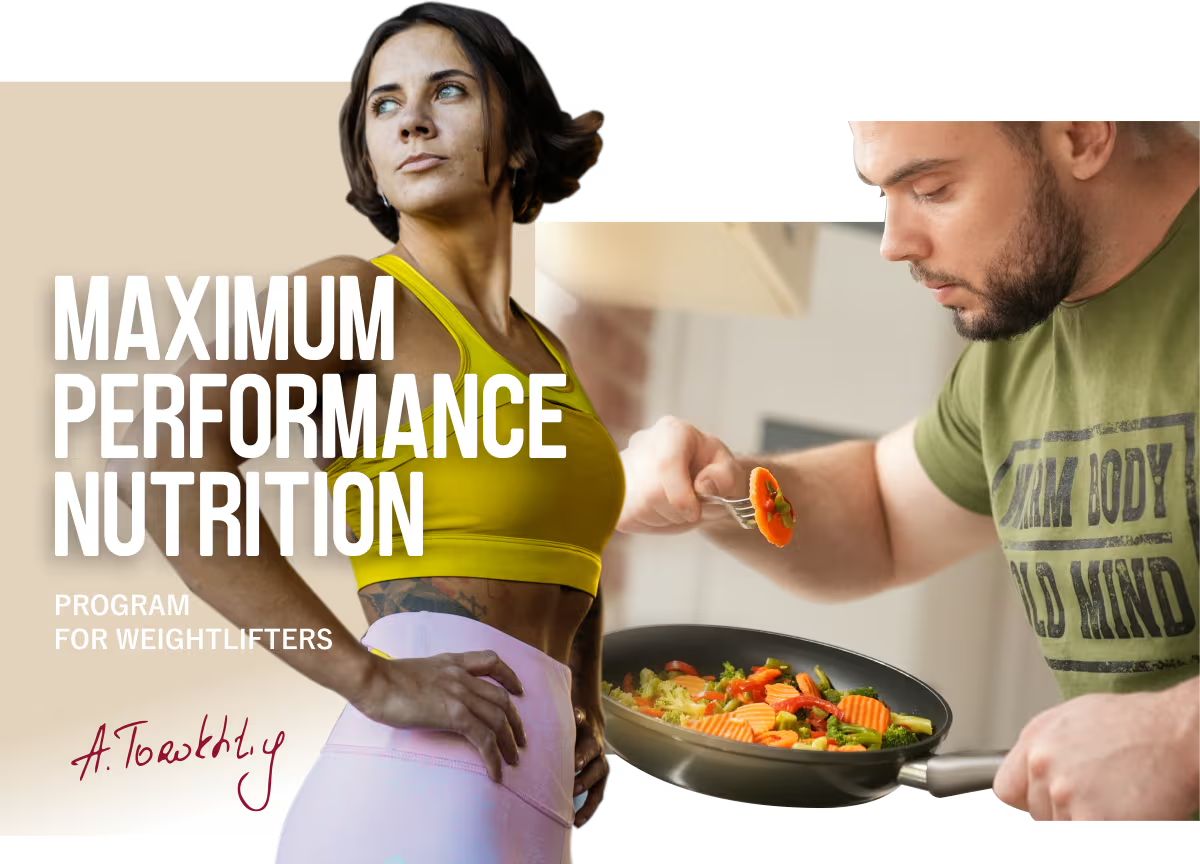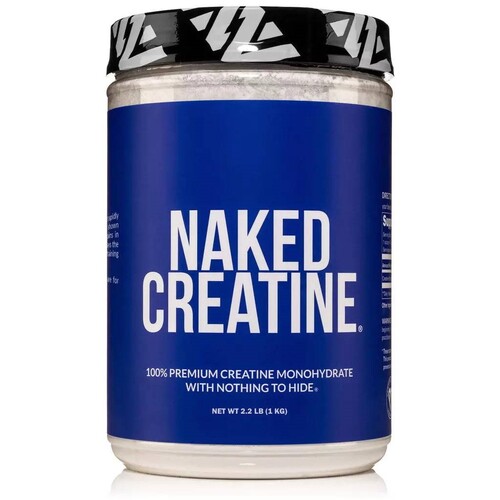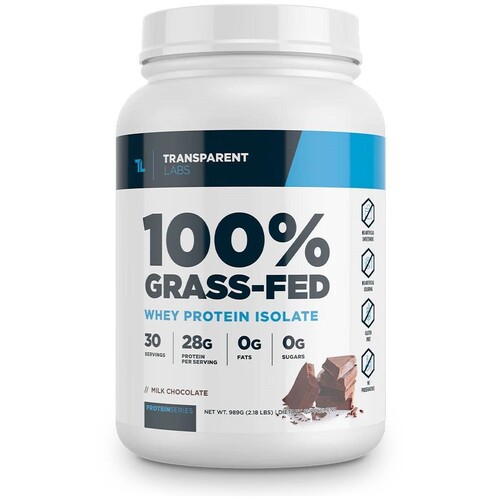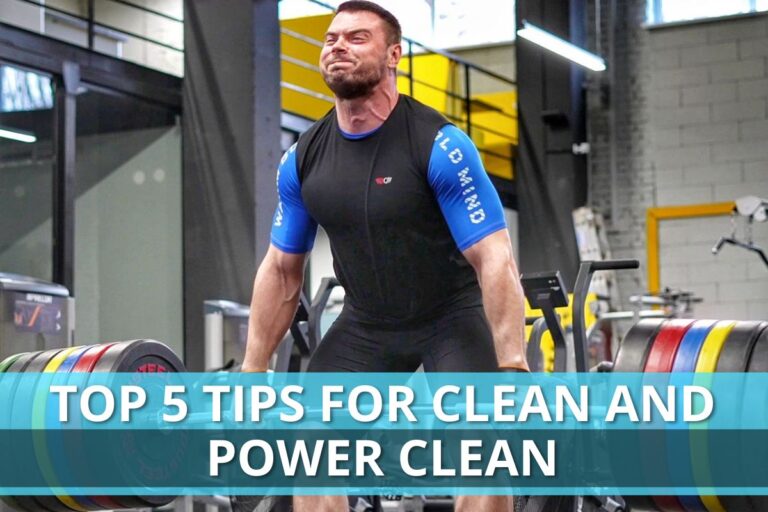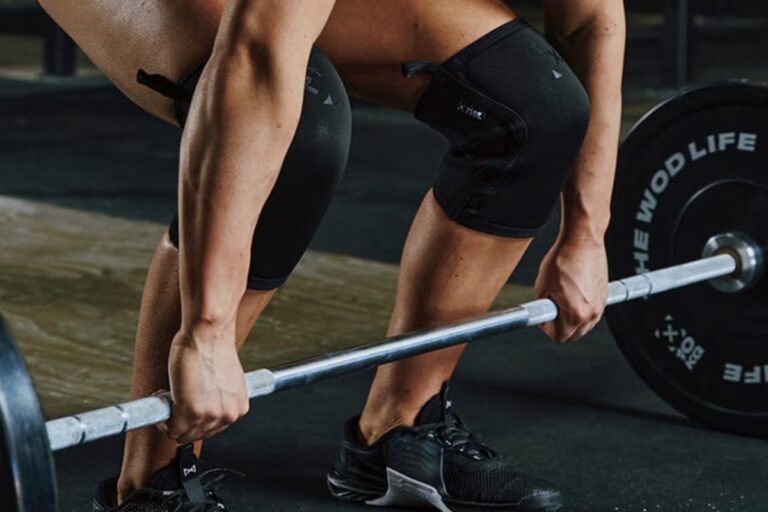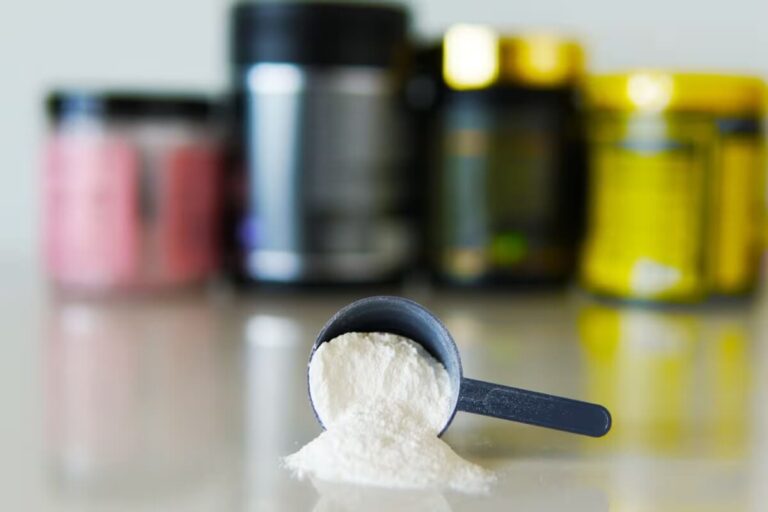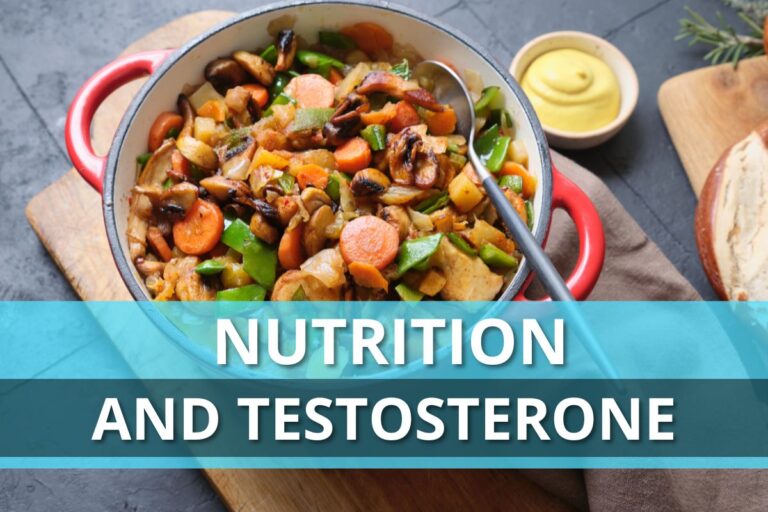The Powerlifter’s Diet: Fueling Strength and Performance
Welcome to our comprehensive guide on the powerlifter’s diet – strength and performance diet, where we dig into the optimal nutrition strategies for powerlifters. Doesn’t matter if you’re a professional powerlifter or just starting your lifting journey, understanding how important nutrition is for maximizing your performance and achieving your goals will probably be very beneficial.
In this article, we will look closer at the powerlifter’s diet – What are the benefits, macronutrient requirements, meal timing, recommended foods, supplements, and more. So, let’s dive in and discover how you can fuel your strength!
The powerlifter’s diet focuses on fueling strength and performance through a balanced intake of macronutrients. Prioritizing nutrient-dense whole foods, proper meal timing, and individualized calorie intake is crucial for optimizing strength gains and overall performance in powerlifting.
Movement stimulates amazing physiological changes within our bodies. These changes require adequate energy and nutrients. By understanding these changes, we can make informed decisions when formulating our nutritional plans. Whether it’s a workout, training session, or intense competition, these activities put stress on our bodies, acting as a bridge for growth, repair, and adaptation.
Subsequently, during the recovery phase, we see our bodies becoming stronger, more resilient to the same stress, and skillful, paving the way for further progress. That is why Powerlifters should follow a diet tailored/designed for their specific needs.
Powerlifting is often linked with absolute strength – which is absolutely the right thing to do, however it is important to know that it is also a weight-class sport. In powerlifting, nutrition is a game-changer when it comes to success and securing a proper place on the scoreboard. It is not just about strength training. It’s also about finding the right balance in your meals to fuel your body, enhance your performance, and ultimately get those victories and dominate your weight class.
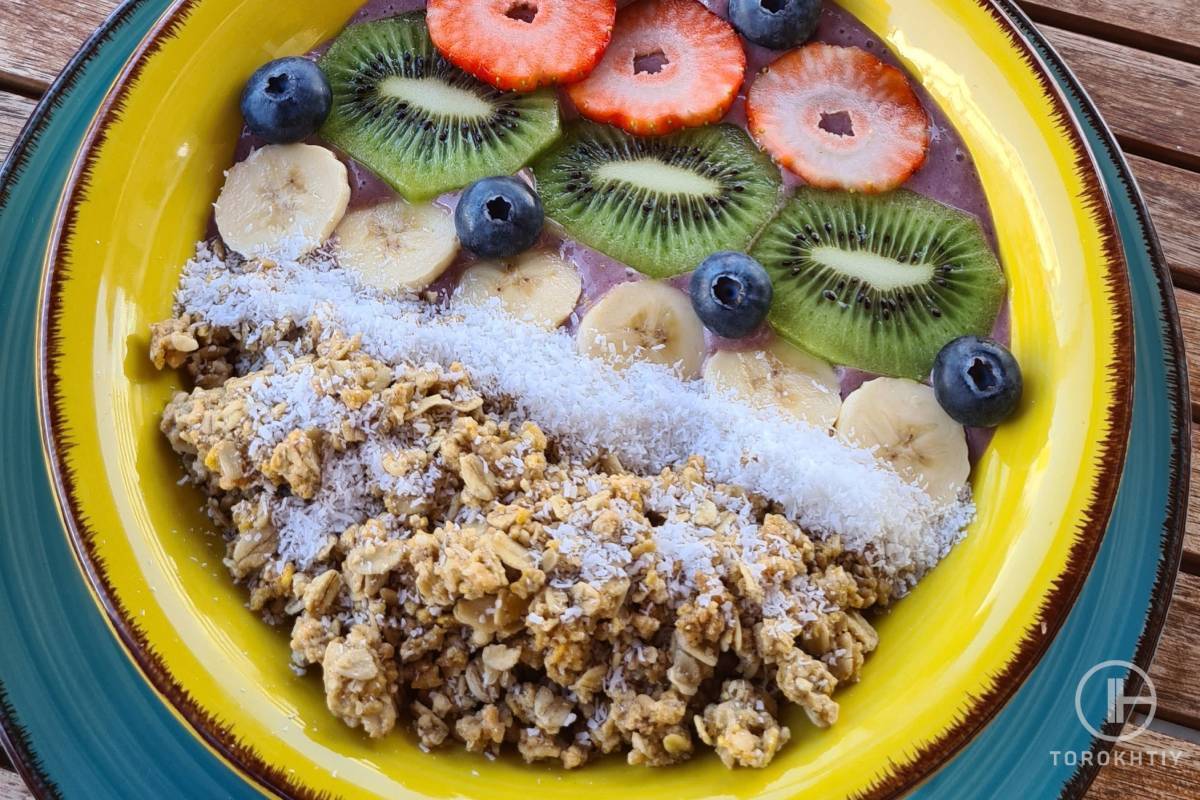
What Is the Powerlifters Diet?
The powerlifter’s diet is designed to support the high demands of intense training and promote strength gains. While it’s not always necessary to eat this way, powerlifters typically adhere to specific nutritional guidelines to optimize their performance. This diet might be different from other diets due to its focus on specific macronutrient ratios, calorie intake, and meal timing.
A healthy, lean powerlifting diet should emphasize a proper intake of protein, carbs, and healthy fats to support muscle growth, strength, and performance while minimizing unwanted body fat.
Benefits of the Diet for Powerlifting
✅ Improved Strength and Performance
- by following a nutrition plan tailored to their specific needs, powerlifters can experience significant improvements in strength and performance through optimized macro intake, providing enough fuel for their intense training sessions.
✅ Enhanced Muscle Growth and Recovery
- by providing high quality proteins to promote and enhance muscle protein synthesis and repair.
✅ Better Body Composition
Utilizing a Powerlifter Diet might contribute to better body composition by balancing calorie intake and macronutrient ratios to support lean muscle mass and reduce unwanted body fat. However, cutting diet for powerlifters requires a careful balance between fat loss and maintaining strength. By creating a small to moderate caloric deficit, focusing on nutrient-dense foods, with enough protein intake and prioritizing proper hydration, powerlifters can achieve their desired body composition while still performing at their best.
✅ Increased Energy Levels
Enabling powerlifters to sustain high-intensity workouts and maintain optimal training output. Incorporating nutrient-dense whole foods, personalized calorie targets, and strategic meal planning are key elements of the powerlifter’s diet to maximize these benefits and excel in the sport of powerlifting.

The Role of Calories in a Powerlifter’s Diet
Calories play a crucial role in a powerlifter’s diet – any athlete’s diet to be honest, because they give/provide all the energy that is needed for training, recovery, and performance.
When it comes to nutrition, our bodies take in energy through the food we consume (we can also utilize stored energy from sources like fat or muscle tissue). The energy we expend is necessary for vital functions like metabolism, maintaining body temperature, tissue repair, fuel replenishment, and movement.
This relationship between energy intake and expenditure is known as energy balance, which plays a crucial role in our health, body composition, and performance. By understanding energy balance, we can better plan our macro-based nutrition for powerlifting programs and achieve desired outcomes.
Energy Balance Determines Our Body Weight:
- If we take in more energy than we use or excrete, we gain weight.
- If we take in less energy than we use or excrete, we lose weight.
- If we take in the same amount of energy than we use or excrete, we stay the same.
How to Determine Your Calorie Needs?
Estimating an individual’s energy needs and expenditure is often a matter of educated approximation rather than precise calculation. Although predictive equations are not as accurate as lab measures, they are useful tools for establishing a baseline estimate of energy needs. These equations take into account factors such as sex, age, height, weight, and activity level, allowing us to gain a good starting point in estimating energy utilization.
You can estimate your Resting Metabolic Rate (RMR – it’s the energy we would use while lying down doing nothing :-)) using formulas like the Mifflin-St. Jeor equation:
Females: (10*weight [kg]) + (6.25*height [cm]) – (5*age [years]) – 161
Males: (10*weight [kg]) + (6.25*height [cm]) – (5*age [years]) + 5 (1kg=2,21lbs) and then apply an activity multiplier to determine total calorie needs:
- Lightly active (light exercise 1-3 days/week) RMR x 1,375
- Moderately active (moderate exercise 3-5 days/week) RMR x 1.55
- Highly active (hard exercise 6-7 days/week) RMR x 1.725
- Very highly active (hard exercise + physical job or 2x day training ) RMR x 1.9

This provides you with total daily energy expenditure, or TDEE.Tracking calories allows you to adjust your intake based on your goals, whether it’s:
- fat loss – If the goal is to lose fat and reduce body weight, bring TDEE down by 15-25%.
- muscle gain – If the goal is to build more muscles and increase overall body weight, bring TDEE up by 5-15%.
- body recomposition – If the goal is simultaneous fat loss and muscle hypertrophy (which is harder for experienced athletes), lower TDEE by 5-10% and aim for minimum 1.1g of protein per lb of bodyweight (2.4g/kg)
- non-weight change goals – if the goal is weight maintenance, then follow the given TDEE for 2-4 weeks. See the response, and adjust as necessary.
What Macronutrients are Important for a Powerlifter: Nutrition For Powerlifting
All macronutrients as well as proper hydration are important or I’d say essential for powerlifters as they provide the necessary fuel for intense training and support recovery. Nutrient deficiencies can:
- reduce endurance
- decrease muscle strength and power
- increase recovery time after meets
- reduce muscle mass
- increase body fat
1. Carbohydrates – More Than Just an Energy for Powerlifters
Carbs are important fuel for high-intensity exercise but carbohydrate-rich foods, especially minimally-processed whole foods, offer more than just energy. They are (carbohydrate-rich foods) often the best sources of essential nutrients like vitamins, minerals, phytonutrients, water and fiber as well. In the context of muscle building, carbohydrates play a role in promoting anabolic signaling, growth, and repair. For those looking to gain muscle and overall mass, carbohydrates can be very helpful.
Additionally, getting extra carbohydrates during or after intense training sessions helps to restore depleted glycogen stores rapidly, especially when working out frequently and training more than once a day, or when one day you train in the evening and the next day you have a session in the morning. Worth mentioning that the scientific evidence does not support the information that low-carb diets are beneficial for athletes, which is kind of a popular belief. On the contrary, ensuring a sufficient intake of carbohydrates is important for maxing out your performance and promoting good recovery.
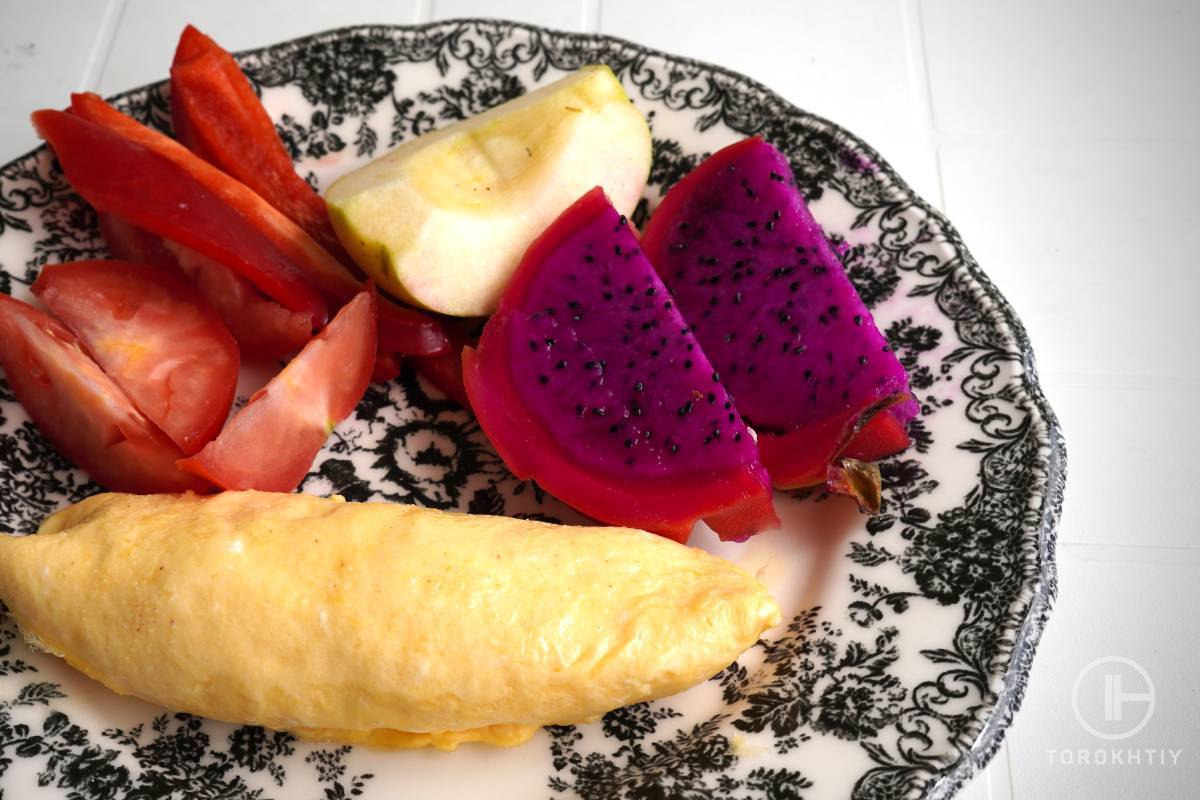
2. Proteins – Essential Building Blocks for Powerlifters
Protein plays a key role in muscle repair and growth. They are crucial in optimizing the body’s natural recovery processes, especially after intense workouts. Adequate protein intake, including amino acids before, after, and sometimes during exercise, helps shift our body from protein breakdown to efficient rebuilding.
When selecting high-protein foods to support your nutrition plan, make sure you are looking for options that give you a complete profile of essential amino acids (EAAs). You might check the leucine content, because leucine triggers muscle protein synthesis. There is more… Keep in mind that you don’t need proteins only for muscle development but also for the synthesis of hormones, neurotransmitters, and other essential proteins, super important for our physiological functions.
3. Fats – Fueling Performance and Recovery
Fats as the main fuel source during lower intensity movements, gives us sustained energy. Fats, often overlooked in discussions about powerlifting nutrition, play a big role in supporting the performance and recovery of strength athletes. During lower intensity movements, where the oxidative system is predominantly engaged and fats serve as the primary fuel source.
Getting adequate amounts of healthy fats becomes necessary.
While our focus tends to be on the stressors in our training, it’s equally important to look at the recovery side of the equation. Including healthy fats, such as those rich in omega-3 fatty acids, can yield numerous benefits for strength athletes.
Scientific evidence suggests that omega-3 fatty acids have anti-inflammatory properties, helping with the exercise-induced inflammation. This anti-inflammatory effect can improve recovery, promote joint health so important for powerlifters! and potentially reduce the risk of injuries.
By knowing how important fats are in powerlifting nutrition and incorporating healthy sources of fats, such as nuts, and fatty fish in their diet, athletes can optimize their performance, support their recovery, and ensure long-term well-being.
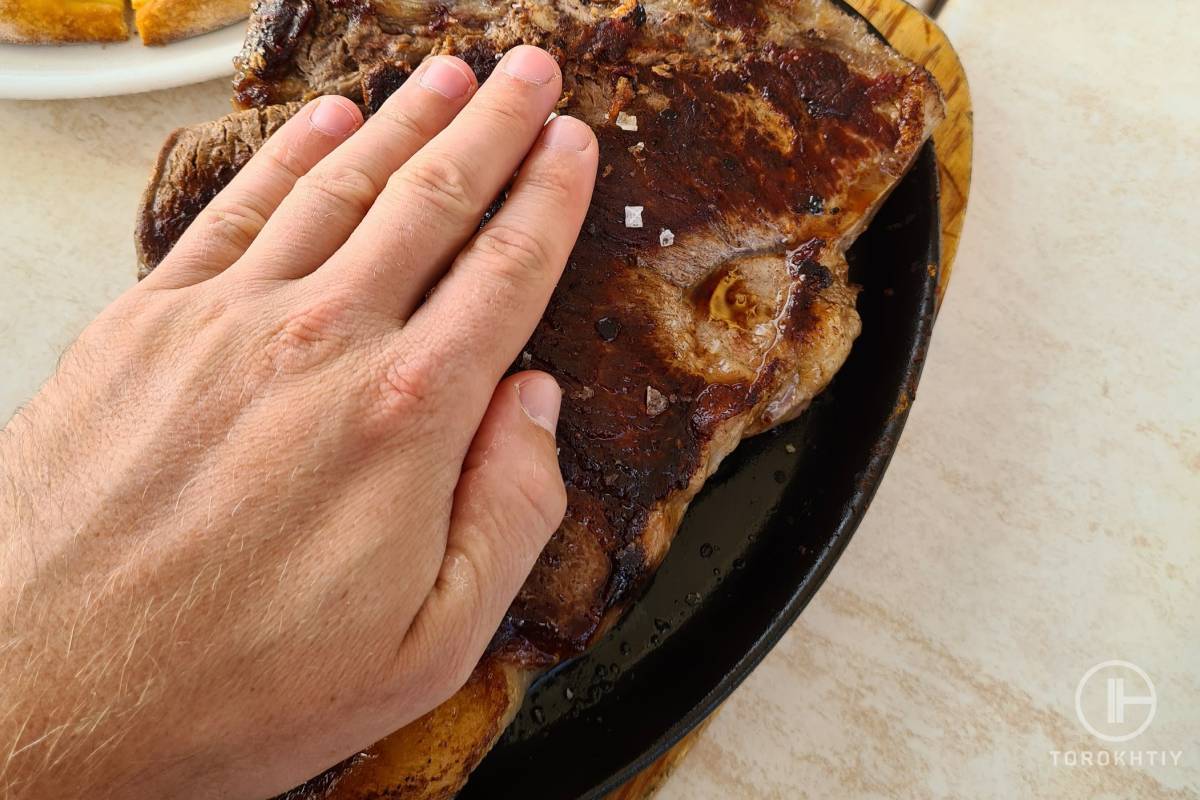
4. Movement Intensity Will Dictate Our Macro Split and Nutritional Suggestions
During Very intense exercise (Over 90% max exertion) we primarily use the ATP-PCr system.
During Lower intensity movement (less than 80% max heart rate; less than around 65% of VO2max) we mainly use our oxidative system, with fats as the main fuel.
So it looks like Powerlifting mainly relies on the ATP-PCr system for short bursts of maximal power, while the aerobic system aids in recovery between efforts and fuel sled work on GPP or high performance recovery training.
That being said our recommendation for macronutrient split for powerlifters look like this:
- 35% of the Total Daily Energy Expenditure (TDEE) should come from carbohydrates,
- 25% from proteins, and
- 40% from fats, providing a solid foundation for strength and performance optimization.
When and How to Eat for a Better Powerlifting?
When it comes to powerlifters, timing and specific strategies for meal and macro timing may have less acute impact on performance. Powerlifters who engage in short, intense lifts with longer rest periods may find that protein timing has minimal impact on performance, and carb timing may not be necessary unless multiple training sessions are involved in their cycle. Overall daily macronutrient intake is more important for most and the focus for powerlifters should be on maintaining a well-balanced diet throughout the day rather than strict meal timing.
Prioritizing nutrient intake and fueling the body properly is key to improvement in weight-room and overall well-being. Of course it might help if post-workout meals would include a mix of carbs and protein to restore glycogen stores and support muscle repair. Additionally, spreading protein intake evenly throughout the day might promote muscle protein synthesis a bit better.
Best Foods for a Powerlifter’s Diet
The powerlifter’s diet should focus on nutrient-dense foods that support strength and recovery. That include:
- non-processed meats,
- poultry, fish and eggs,
- fruits and vegetables,
- whole grains and
- healthy fats.
A well-balanced meal plan throughout the day ensures a steady supply of nutrients. After intense training sessions, it is crucial for powerlifters to prioritize nutrition to fuel performance during activity and optimize the body’s natural recovery processes. Proper powerlifting diet plan provides good nutrition, especially post-activity, that supports efficient recovery and enhances overall performance.

Here’s a Sample of Powerlifting Meal Plan for a Day:
Breakfast:
- Spinach and mushroom omelet cooked in coconut oil
- Sliced avocado on the side
- A handful of mixed nuts
Snack:
- Apple slices with peanut butter
Lunch:
- Grilled chicken breast with roasted sweet potatoes
- Steamed broccoli drizzled with olive oil
- Mixed greens salad with cherry tomatoes, cucumbers, and balsamic vinaigrette
Pre-Workout Snack:
- Protein Shake with Banana and some forest fruits
Post-Workout:
- Grilled salmon filet
- Cauliflower puree with vegetables and olive oil
- Side of fresh berries
Dinner:
- Grass-fed beef steak
- Roasted Brussels sprouts with bacon
- Steamed asparagus with lemon zest
- A small serving of mixed berries for dessert
Note: This meal plan focuses on whole, unprocessed foods. Adjusting portion sizes based on individual needs is needed.
If you don’t know where/how to start your nutrition improvements that will have an impact on your weightlifting performance, we recommend our MAXIMUM PERFORMANCE NUTRITION – a detailed guide on diet planning and weight management for weightlifters, or… just contact our team and we will find a perfect plan for you.
🔻Maximum Performance Nutrition Program
Unlock your maximum potential with our Maximum Performance Nutrition Program. Tailored for weightlifters, this program offers serving-based diet planning, no food weighing required.
Perfectly complement your training for efficiency, body composition, competition prep, and weight class adjustments. Optimize performance, carbs, meal timing, and supplements.
Weightlifting Meal Plan Details:
- Easy step-by-step instructions;
- Serving control basis with no food weighing;
- Calorie intake is calculated for body mass;
- Adapts to your training schedule;
- Detailed guidance on progress tracking;
- Meal timing and serving sizes master tools;
- One-time payment for unlimited access.
Level up your game today!
Ways to Count Calories and Macros Besides Checking the Labels
Counting calories and tracking macros are essential for powerlifters to optimize their nutrition and achieve desired body composition goals, like getting rid of that unwanted body fat. While checking food labels is a common method, there are other effective approaches to consider:
- Our Recommendation for most of the athletes – Hand-Based Portion Tracking: This method involves estimating portion sizes using your hand as a guide. For example, your palm represents protein servings, your cupped hand represents carbs, your thumb represents fats, and your fist represents vegetables. It takes into account individual variations in hand sizes and can be a very useful tool for promoting balanced meals and portion awareness without the need for measuring tools or scales.
It offers a practical way to monitor intake without relying on precise measurements. Unless you’re chasing extreme results against a non-negotiable deadline – for instance, you get paid for how your body looks or performs – hand portions can get you where you want to go. Here are approximate gram equivalents for each macronutrient based on hand-size portion guide:
1. Protein
Palm of your hand (excluding fingers):
- For men – Approximately 24 grams of protein, 2g of carbs and 4,5g of fats, total 145 kcal
- For women – Approximately 22 grams of protein, 2g of carbs and 4g of fats, total 130 kcal
- This estimate works for both animal and plant-based protein sources.
This estimate works for both animal and plant-based protein sources.
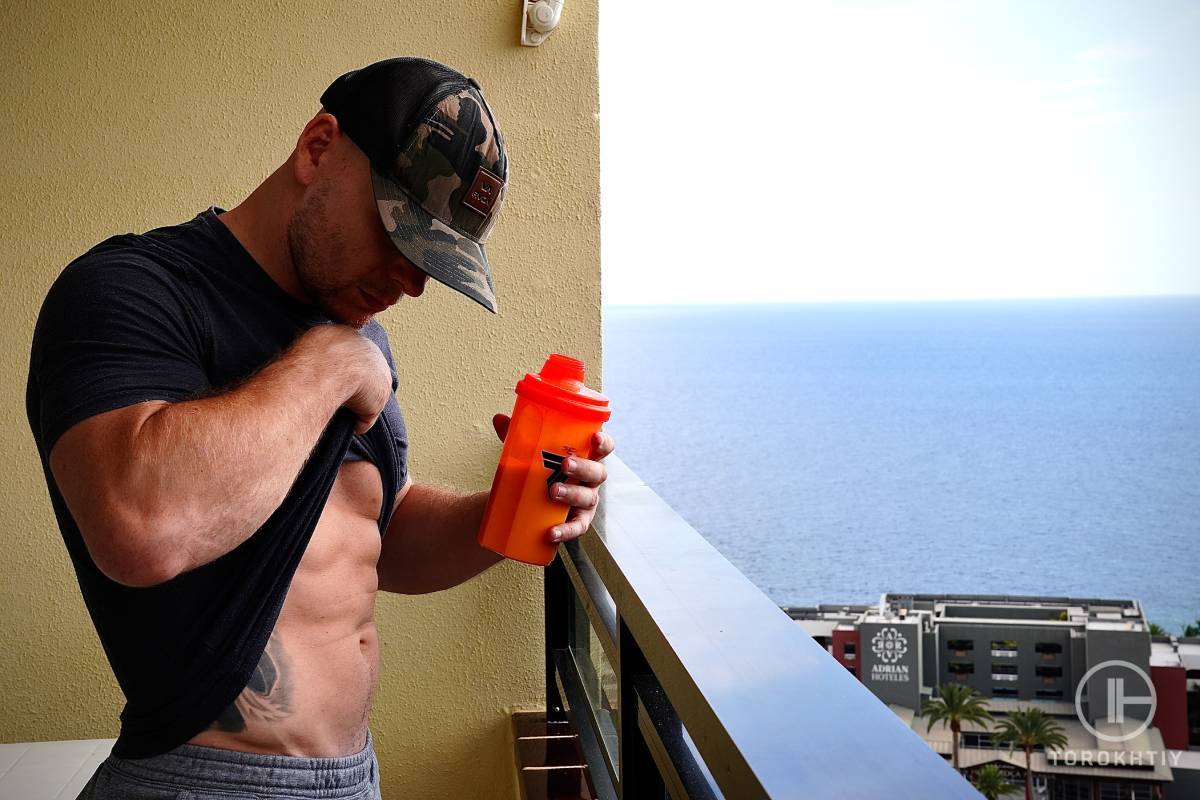
2. Carbohydrates
Cupped hand (excluding fingers):
- Men – Approximately 25 grams of carbohydrates, 3g of protein and 1g of fat – total 120 kcal
- Women – Approximately 22 grams of carbohydrates, 2g of protein and 1g of fat – total 110 kcal
This includes starchy carbohydrates like rice, potatoes, and grains, fruits and some vegetables.
3. Fats
Thumb:
- Men – Approximately 9 grams of fats, 2g of protein, 2g or carbs – total 100 kcal,
- Women – Approximately 8 grams of fats, 2g of protein, 2g or carbs – total 90 kcal
This includes both healthy fats like nuts, seeds, and oils, as well as fats in foods like avocados.
4. Vegetables
Fist:
- Men and Women – Approximately 1.5 grams of protein, 5g of carbs, 0g of fat – total 25 kcal
- App/Web-Based Platforms: Utilize mobile apps or online platforms designed for tracking nutrition. These tools offer extensive food databases, customizable features, and meal planning options. They provide convenient ways to monitor calorie and macronutrient intake accurately.
- Mindful and Intuitive Eating: Understanding what it feels like to be hungry, satiated, full, and/or overstuffed is a lifelong skill. Instead of solely focusing on strict tracking, this approach emphasizes listening to your body’s hunger and fullness cues. By being mindful of your eating habits, you can make better and conscious food choices and also portion sizes. This approach promotes a healthy relationship with food and can be effective for achieving nutritional goals, however it might not be the right choice for you if you are looking for a more precise way or just enjoy numbers :).
Remember, finding a method that works for you and your lifestyle is key. Experiment with different approaches to see which one works best for you. Consistency (most important one) and accuracy in tracking calories and macros will help you optimize your nutrition for powerlifting performance.
What Supplements Should Be Included in the Powerlifter’s Diet?
Supplements can complement a powerlifter’s nutrition, but they should be used correctly and with caution – within regulations for drug-tested athletes.
Our main recommendation:
1. Naked Creatine monohydrate
Creatine monohydrate – well studied, popular supplement recommended for weightlifters because it supports brain and body health, including ATP regeneration for high-intensity efforts. 5g/day every day is a good strategy. Creatine needs to be taken consistently.
Our Recommendation – Naked Nutrition – Creatine Monohydrate Powder – Naked Creatine offers powerlifters a pure and effective supplement to support their strength and performance goals. With just one ingredient, creatine monohydrate, good quality because of third-party testing and the total absence of artificial additives, it looks like Naked Creatine gives the athletes a solid option for maximizing their training. Consider including Naked Creatine into your supplementation menu.
2. Transparent Labs Protein Powder
Protein Powder – recommended for powerlifters and all human beings 🙂 as it provides a very convenient and efficient way to meet protein needs, supporting muscle recovery and growth.
Our Recommendation – Transparent Labs – Whey Protein Isolate – When it comes to choosing a protein powder quality really matters. Transparent Labs Whey Protein Isolate looks like one of the top choices we might have. Sourced from 100% grass-fed American dairy cows. This protein powder has a high protein-by-weight ratio, delivering 28 grams of protein per 34 gram scoop which is a solid number. With its premium sourcing, high protein content, and commitment to clean ingredients, this protein powder delivers the solid portion of protein needed to support optimal recovery, muscle growth, and overall health. If you are following a diet for powerlifting – you might choose Transparent Labs Whey Protein Isolate to experience the benefits of an effective protein source.
Other supplements to consider include:
- caffeine (up to 400 mg/day) – see our other article about caffeine,
- electrolytes,
- adaptogens (f.e. rhodiola rosea, ashwagandha, resveratrol)
- omega-3 (2-3g/day), greens, fiber and a multivitamin (if deficient).
Keep in mind that non-essential does not mean non-beneficial. However, competitive athletes who are drug-tested: Be very, very careful about ALL supplements (ALL OF THEM) and consult taking any supplement with your Nutritionist and Coach.
What Foods Are Better to Avoid for a Powerlifter?
While each person’s dietary needs may be different, it’s generally recommended to limit or avoid processed foods high in added sugars and processed fats.Looking for nutrient-dense whole foods is key to max out your performance and improve your overall health.Avoid dehydration – might sound boring for you but I would like to emphasize the importance of maintaining proper hydration during training. While it may seem prosaic, even a loss of 1-2 percent of body water can have significant consequences for athletes. Dehydration can lead to impaired brain function, decreased endurance, and diminished strength and power.
Understanding the Nuances: Nutrition Choices for Powerlifters in Training and Competition
Differentiating between training and competition sessions is crucial as nutrition choices can/should be different as well.During training – when we want to develop our capacity – the focus is on building, adapting, and growing, so nutrition supporting adaptation is prioritized.
During competition – when we want to display our capacity, perform and demonstrate our skills – immediate performance enhancement becomes way more important, and nutrition choices are shifted towards that.That being said, certain supplements like tart cherry juice, turmeric, rich in antioxidants, can help in reducing exercise-induced oxidative damage and improve performance.However, excessive antioxidant supplementation may lower beneficial adaptations, reducing the body’s ability to deal with future stressors.
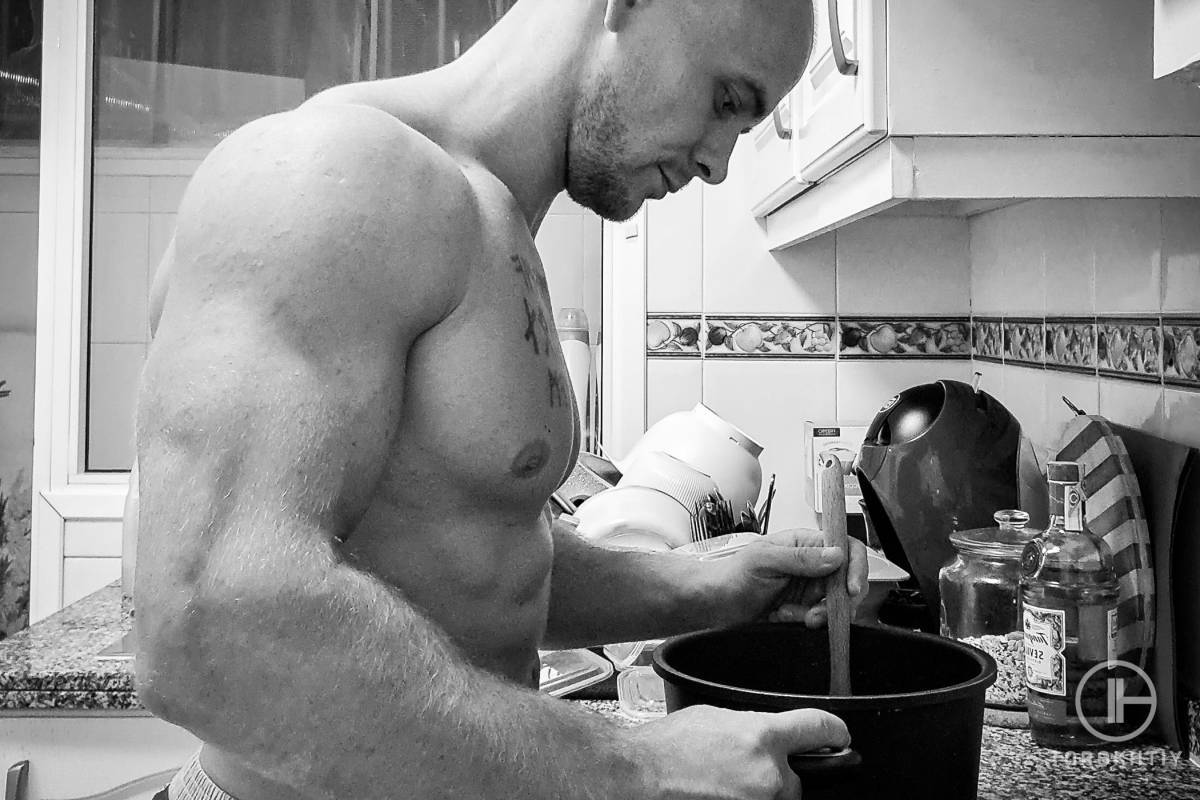
Nutrition for Powerlifting Experiment
If you’re interested in experimenting with different nutritional approaches, you can try a self-experiment using a nutritional periodization approach.
- Begin by planning and eating a high-fat/low-carbohydrate diet during the first testing period, with carbohydrates set at 20% of total energy intake.
- In the second period, change it to a low-fat/high-carbohydrate diet, setting fat at 20% of total energy intake.
- Keep protein intake consistent during both testing periods – around 1-1.3g of proteins per lb of bodyweight (2,2-2,8g/kg).
By using outcome-based decision making informed by data, rather than relying on ideologies or speculation, you can assess the success of each approach and choose the best powerlifting diet for yourself.
FAQ
Why Do Most Powerlifters Eat So Much?
The ultimate goal of Powerlifting is absolute strength which requires proper fueling as in this case size actually can matter 🙂 Powerlifters often eat a higher amount of calories to support their heavy training sessions, promote muscle growth, and help with recovery. Eating in a caloric surplus also helps to provide the necessary energy and nutrients for optimal performance during training and competitions.
What Do Powerlifters Eat in a Day (Or Should)?
Powerlifters typically eat a balanced diet that includes lean proteins, complex carbohydrates, healthy fats, fruits, and vegetables. Looks like:
- 1.5-2.5g of carbohydrates per lb of bodyweight (3.5-5.5g/kg),
- 1-1.3g of protein per lb of bodyweight (2,2-2,8g/kg) and
- remaining kcal delivered with healthy fats works well for most strength athletes (powerlifters, weightlifters)
Their strength diet doesn’t require complex preparation or refueling protocols, as long as the athlete is following a solid program of fundamental skills and practices.
What Is the Best Diet for Female Powerlifters?
Female powerlifters’ diet is no different. Women can basically follow the same principles as their male friends, focusing on proper macronutrient ratios and nutrient-dense whole foods. Customization based on individual needs and goals is essential in both men and women.
Is There the Best Powerlifting Diet Or/and What Are the Best Foods for Powerlifting?
Yes and no 🙂 The best powerlifting diet plan is one that supports overall strength and performance. It should include a balanced intake of macronutrients, such as carbohydrates, proteins, and fats, customized to meet the specific and individual needs of powerlifters. Additionally, emphasizing whole foods full of nutrients, proper meal timing, and individualized calorie intake are key components of an effective and healthy powerlifting diet. So, to eat for strength, it’s important to prioritize a well-rounded and personalized approach to nutrition.
Conclusion
To dominate in powerlifting, fueling your body with the right nutrition is super important. The powerlifter’s diet can set the solid foundation for strength, performance, and overall well-being.
By understanding the role of calories, macronutrients, meal timing, and supplements, you can optimize your nutrition to reach the next level in your powerlifting journey.
Keep in mind, it’s always a great idea to consult with a dietitian or nutritionist to improve your diet so it can meet your specific needs.
Remember that no matter which method you choose, keep tracking progress and using outcome-based decision making:
- If what you’re doing is working, keep doing it.
- If what you’re doing isn’t working, change it.
Feel free to share your thoughts and ask any questions in the comment section below. Stay strong!
Also read:
- Best Tasting Bcaa
- Best Bcaa for Runners
- Herbs for Muscle Recovery
- Best Intra Workout Supplements
- Best Magnesium for Muscle Recovery
- Best Ashwagandha Supplement
- Best Bcaa for Women
- Best Krill Oil Supplement
- Best Post Workout Drink
- Best Nitric Oxide Supplements
References:
- Leucine and α-Ketoisocaproic Acid, but Not Norleucine, Stimulate Skeletal Muscle Protein Synthesis in Neonatal Pigs // Ncbi: https://www.ncbi.nlm.nih.gov/pmc/articles/PMC2903301/
- Long-chain omega-3 fatty acids: time to establish a dietary reference intake // Pubmed: https://pubmed.ncbi.nlm.nih.gov/24117792/
- International society of sports nutrition position stand: nutrient timing // Pubmed: https://pubmed.ncbi.nlm.nih.gov/28919842/
- Creatine Supplementation and Brain Health // Pubmed: https://pubmed.ncbi.nlm.nih.gov/33578876/
- New strategies in sport nutrition to increase exercise performance // Pubmed: https://pubmed.ncbi.nlm.nih.gov/26855422/
- How Much Caffeine Is in Pre-Workout? // Torokhtiy: https://torokhtiy.com/blogs/guides/how-much-caffeine-in-pre-workout
- Effect of trans-fatty acid intake on blood lipids and lipoproteins: a systematic review and meta-regression analysis // Apps: https://apps.who.int/iris/handle/10665/246109
- New strategies in sport nutrition to increase exercise performance // Pubmed: https://pubmed.ncbi.nlm.nih.gov/26855422/
- SPRINTING. . . Dietary Approaches to Optimize Training Adaptation and Performance// Pubmed: https://pubmed.ncbi.nlm.nih.gov/30943814/
- International Society of Sports Nutrition Position Stand: protein and exercise// Pubmed: https://pubmed.ncbi.nlm.nih.gov/28642676/
Why Trust Us?
With over 20 years in Olympic Weightlifting, our team does its best to provide the audience with ultimate support and meet the needs and requirements of advanced athletes and professional lifters, as well as people who strive to open new opportunities and develop their physical capabilities with us.
By trusting the recommendations of our certified experts in coaching, nutrition, dietology, and sports training programming, as well as scientific consultants, and physiotherapists, we provide you with thorough, well-considered, and scientifically proven content. All the information given in the articles concerning workout programming, separate exercises, and athletic performance, in general, is based on verified data. We ensure that you can rely on our professionals’ pieces of advice and recommendations that can be treated as personalized ones which will benefit you and fully meet your needs.
The product testing process is described in more detail here
Author: Jacek Szymanowski
Certified Nutritionist,
M.Sc.Eng. Biotechnology
Performance Architect,
Strength and Conditioning Specialist
With over 30 years of fighting experience, specialization in nutrition coaching for athletes, and expertise in metabolic health and dietary strategies, Jacek offers a comprehensive approach to optimizing your performance and well-being. Backed by a Master of Science degree in Biotechnology, Jacek remains at the forefront of scientific advancements, ensuring that his coaching is always evidence-based and up-to-date.

